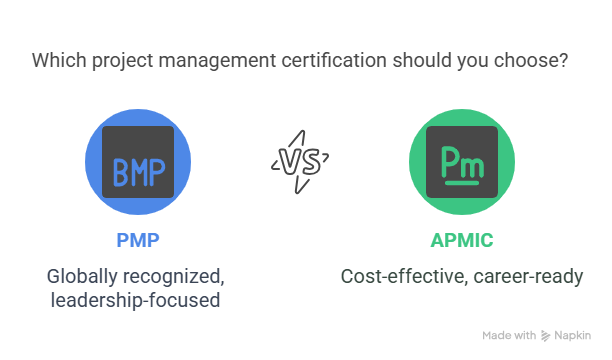Project Management Certification Exam Questions: What to Expect in 2025
The 2025 landscape of project management certification exams is more rigorous and applied than ever before. Whether you're aiming for the PMP, APMIC, or CAPM, expect scenario-based problem-solving, agile case dynamics, and tool-focused evaluations—not memorization. This shift reflects industry demand for project managers who don’t just understand process—but who can apply it under pressure.
This guide breaks down what you’ll actually face during the exam: from domain structures to tool mastery, from hybrid methodology blends to stakeholder negotiation dilemmas. Each question is a simulation, and success lies in anticipating how PMI and APMIC test decision logic—not just knowledge.
Core Domains and Question Patterns You’ll Face
Project management exams in 2025 evaluate five core domains. What’s changed is how they're tested. Every domain now integrates hybrid project environments—especially in Agile-heavy certifications. Expect rapid-context switches between traditional, Agile, and blended workflows.
Scenario example: You’re midway through a predictive execution phase when the product owner requests scope change aligned with a new customer sprint insight. What’s your move? The test doesn't ask what Agile is—it asks how to apply it when the plan isn't Agile.
| Domain Area | Weight in PMP Exam (%) | Typical Question Themes | Key Tools & Techniques to Master |
|---|---|---|---|
| Initiation | 13% | Stakeholder ID, project charter, risk framing | SWOT, Business Case Logs, Assumption Registers |
| Planning | 24% | WBS, scope baselines, cost estimation, stakeholder engagement plans | PERT/CPM, Monte Carlo, RACI, stakeholder maps |
| Execution | 31% | Quality delivery, team management, issue resolution | Team Charters, Quality Matrices, Change Requests |
| Monitoring & Controlling | 25% | EVM, KPIs, scope creep management, variance tracking | Control Charts, EVM, Risk Registers |
| Closing | 7% | Lessons learned, documentation handoff, post-project audit | Closure Reports, Handoff Templates, Benefit Trackers |
| Agile/Hybrid Topics | All Domains | Scrum/Kanban logic, backlogs, velocity, team autonomy | Sprint Boards, Burndown Charts, Product Backlogs |
This shift aligns with trends discussed in project certification career path articles and Six Sigma alignment.
How 2025 Exam Questions Are Structured (And How to Train for Them)
Modern exams like the APMIC Advanced Certification avoid pure multiple choice. Instead, they test:
Process sequencing (What comes first in change control?)
Decision quality (Which response reflects optimal sponsor alignment?)
Risk/action tradeoffs (Escalate or adapt?)
Agile contradiction traps (Scrum vs hybrid missteps)
These mirror real-world scenarios. You’ll be asked to prioritize resource allocation during a risk event while managing sprint burndown pressure—something emphasized in resource scheduling guides and cost control articles.
Which part of the exam do you find most challenging?
Thanks for submitting your answer.
PMP vs APMIC vs CAPM: What’s the Difference in Questions?
PMP emphasizes agility, business cases, and leadership flexibility. CAPM is more terminology-focused, ideal for newcomers. APMIC adds real-use questions tied to enterprise-level tools like RACI maps, variance templates, and procurement lifecycles—something rarely found in basic PMP resources.
| Certification | Format | Best For | Key Topic Focus |
|---|---|---|---|
| PMP | Scenario-based MCQs | Mid-to-senior professionals | Agile, EVM, leadership strategy |
| CAPM | Knowledge-based MCQs | Entry-level candidates | PMBOK terms, flowcharts |
| APMIC Advanced | Case-based + modular | High-stakes project leads | Tool integration, stakeholder realism |
Want to see how these programs map to actual tool use and budget control? Explore budgeting terms here and procurement workflows here.
Frequently Asked Questions
-
The ambiguity in scenario answers. Most questions include two reasonable options. You must pick the PMI-preferred response based on frameworks, not gut instinct.
-
It aligns with PMBOK principles but goes beyond—testing real stakeholder conflict, multi-stage procurement, and risk-cost tradeoffs through modular case logic.
-
In PMP: 50%. In APMIC: Blended throughout. Expect iteration logic, servant leadership, and Scrum prioritization dilemmas baked into every domain.
-
Yes. Expect Monte Carlo, EVM, Control Charts, and RACI formats. Also see tools listed in this quality terminology guide.
-
Only for CAPM. PMP and APMIC focus on application, not recall. Study tools like CPM terms and risk assessment instead.


